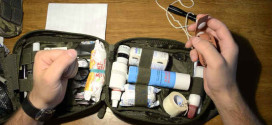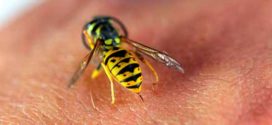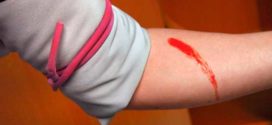During walks in nature, there is a danger of ticks getting on the skin. This insect sucks blood to create a nutrient medium for its future offspring. It is also a carrier of many diseases. Therefore, when an insect hits the skin, each person should know what to do with a tick bite, and be aware of the possible consequences of wrong actions.
Content
Potential Hazard
Ideally, a tick bite passes without a trace for the body. But this is only if he does not have pathogens of dangerous diseases: encephalitis and borreliosis. Lack of treatment can lead to serious consequences. The best way to protect yourself from these troubles is to carefully check the skin after each visit to nature in the warm season.
The size of the tick may be less than 5 mm. If his bite was not noticed immediately, the following symptoms may appear:
- body aches, fever, similar to acute respiratory disease;
- redness appears at the site of the bite;
- general weakening of the body.
Read more about .
First aid measures
The main difficulty is that itching does not appear at the site of contact, it does not itch. The bite can only be determined visually or tactilely. If the tick has already penetrated the skin, it is recommended to immediately contact an ambulance. They can advise on what to do first.
When removing a tick, do not press down on its body. Otherwise, the risk of infection increases. When bitten, you can use the following methods and means:
- Special tweezers. It securely captures the insect, evenly distributing pressure throughout the body. Removal occurs with the help of helical movements, which must be done gradually.
- Using thread and sunflower oil. The first is tied as close as possible to his head and removed with swinging movements. It is preliminary recommended to apply a few drops of sunflower oil to the affected area of the skin.
- Fingers or tweezers. This method is effective only when the insect is saturated with blood. His body becomes larger (up to 10 mm), and the grip of the skin is weakened.
After a successful extraction, the probability of the disease still remains. Therefore, the body of the tick must be taken to the nearest medical center for analysis. This will help to take timely measures for the treatment of diseases.
Tick Protection
A tick bite can be avoided if protective measures are taken in time. They consist in minimally open areas of the skin, the use of special means (repellents) and the use of folk methods. Each of these methods has its own advantages and disadvantages.
For protection, you can use the following:
- Closed clothing and shoes, mandatory wearing of a hat. It is desirable that they be light in color. Against their background, it will be easy to find an insect. This is the most reliable protection when hiking in the forest. The disadvantage is discomfort on hot summer days.
- Use of repellant. There are special compounds that repel insects. They can be valid for up to 12 days, after which the protection needs to be “updated”. The disadvantage is the likelihood of an allergic reaction.
- Folk remedies. These include carnation, Asterisk balm, classic triple cologne.
It is important to determine the presence of a harmful insect in time and take measures to remove it from the surface of the skin.
Hello, I am Alexander, the mastermind behind the blog.
In terms of career and free time, I connected my life with the forest. How else, when you live in Karelia! In this blog, I am responsible for the hunting, hiking and equipment sections. Welcome to my world!
 Survival Lessons Tips for the survivalist, fisherman and hunter
Survival Lessons Tips for the survivalist, fisherman and hunter



